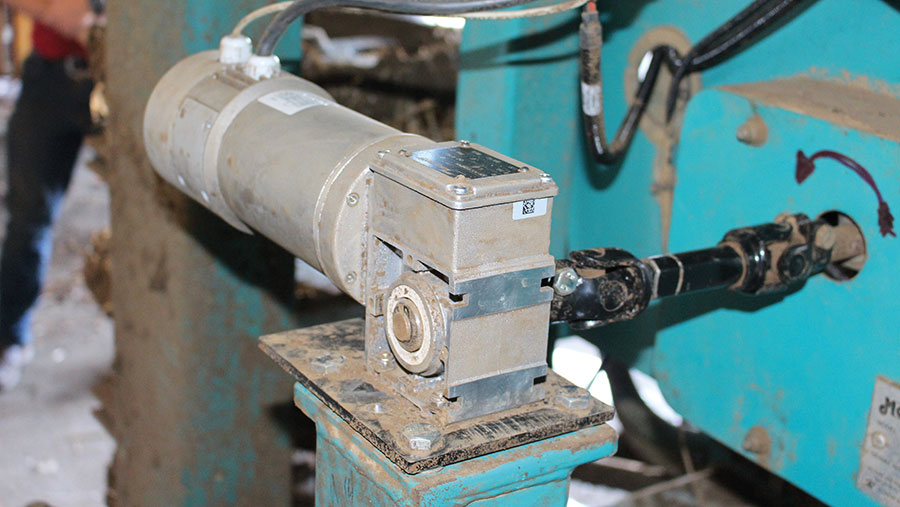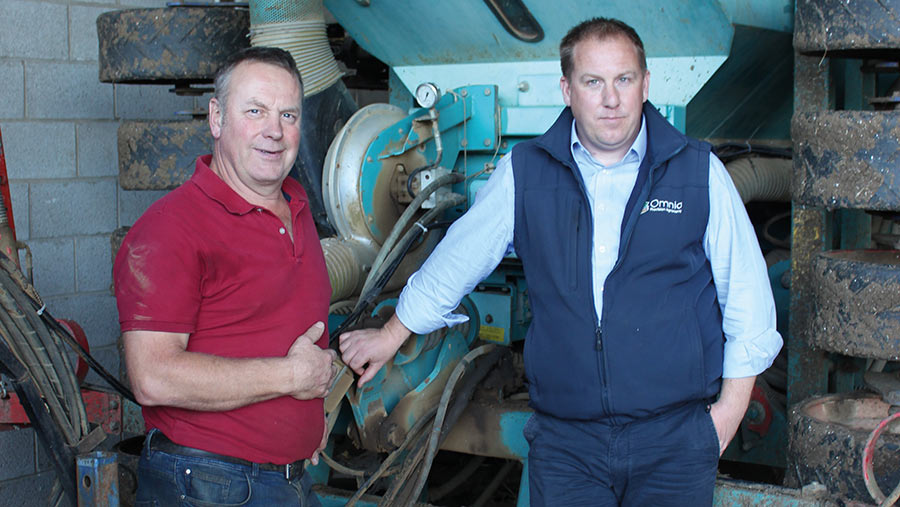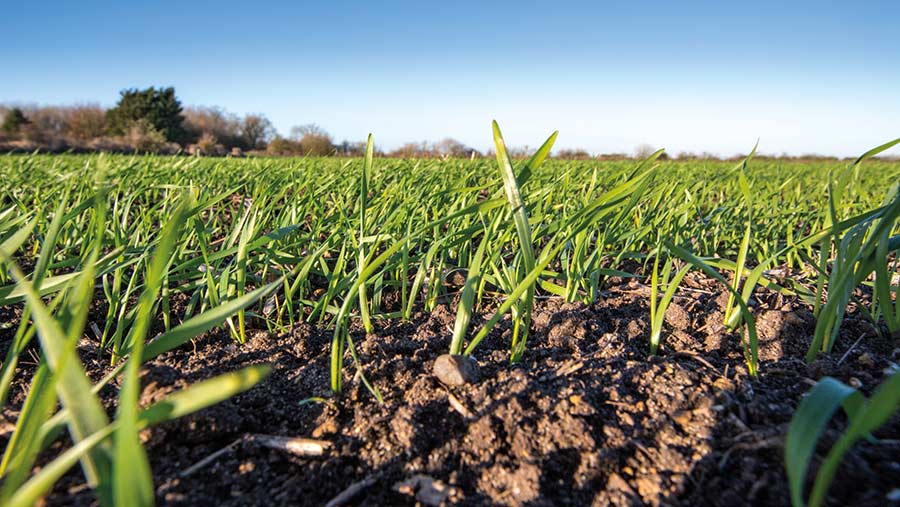How a drill kit enabled farmer to adopt variable seeding
 An electric motor replaces the land wheel © MAG/Richard Allison
An electric motor replaces the land wheel © MAG/Richard Allison Reaping the benefits of variable-rate drilling has, for many growers, meant spending many thousands upgrading their drills. However, a low-cost conversion kit is opening up this technique to many more.
Variable-rate seeding enables farmers to vary seed rates across a field in order to produce a more even plant population, explains Farmacy agronomist Andrew Buckberry, who covers south Lincolnshire and north Cambridgeshire.
See also: How one Devon farmer is succeeding with strip-till maize
It is especially valuable in fields with variable soils. For example, there may be a corner where the soil is heavier and germination rates are lower. By putting more seed on that area, the grower can even up crops.
Variable fields
One grower with variable fields is Mark Sardeson, who admits he has been thinking about variable rate seeding for a few years, but has struggled to justify the investment. He has a 4m Moore Unidrill.
“It’s a perfectly good drill and I’m loath to sell it to get the fancy bit,” he says.
He also likes the idea of problem-solving and has a good workshop, so this autumn decided to give it a go and convert his drill using the Omnia E-Seed kit.
This involved disconnecting the land wheel and using an electric motor to drive the seeder instead. The motor is connected to a box which is controlled by the tablet in the tractor cab via wi-fi.
The conversion kit cost Mr Sardeson about £4,800 plus his labour to fit it – much less than upgrading his drill.
First season
This autumn, he variably drilled 80% of his winter wheat at Manor Farm.
His aim is to even up fields, as he farms a mix of predominantly heavy soils on a boulder clay subsoil. He describes it as being “the brick-making end of sandy, clay loam”.
Farm facts: Manor Farm
- 180ha cropping
- Seventh-generation farm
- 2021-22 cropping includes winter wheat (milling and feed), oilseed rape, winter oats and stewardship
- Variable soils
It has good moisture retention in dry times, but can be tricky in wetter seasons. For example, last autumn, he didn’t get any winter wheat in.
Mr Sardeson points to one field on Heckington Fen, which starts out in one corner as sand, then rolls into sandy loam and becomes stiffer towards the top corner that borders a dyke.

Mark Sardeson, left, and Andrew Buckberry © MAG/Richard Allison
“There are remains of a Roman tile kiln nearby, so they knew there was clay around,” he says.
It’s a similarly variable picture in his other fields across the 180ha of cropping.
Raise yields
His five-year average wheat yield is currently 9t/ha, and he hopes to raise this by evening up fields. Take Robinson field: combine yield maps show that this 16ha field ranged from 5.5t/ha to 9.5t/ha at harvest 2021.
Mr Buckberry points to Hutchinsons work that showed a 0.6-1.4t/ha yield uplift when adopting a variable-seeding approach.
“I would be happy with 0.6t/ha across my area,” says Mr Sardeson.
Mr Buckberry adds that at current prices, that is an extra £110-115/ha.
Zoning fields
Mr Buckberry started with the yield maps and combined this information with Mr Sardeson’s field knowledge to produce the zonings.
As the seed had already been ordered, the overall amount to be drilled was kept the same, with rates varied according to germination percentage.
For example, the seed rate in Robinson field ranged from 344 to 448 seeds/sq m. This was instead of the previous 372 seeds/sq m blanket rate.
At the time of Farmers Weekly’s visit, Mr Sardeson had just finished his wheat drilling and it had gone smoothly.
Next spring, Mr Buckberry plans to do some plant counts to assess how the approach has performed and whether further changes will be needed.
For example, he says overall seed rates may need to be upped, but he would need to demonstrate a yield response to justify the extra seed.
Looking to the future, the hope is that the farm average will nudge nearer to double digits. The potential is there, as some fields are already averaging nearly 11t/ha.

Generating maps
Generating variable seeding maps is much simpler thanks to the Omnia software, which takes care of the number crunching.
Andrew Buckberry highlights that it uses a layered approach, using information such as combine yield maps and soil type.
Drop-down menus allow the programme to recalculate seed rates allowing for other factors including weed pressure and rotations.
For example, farmers need to select low, medium, high or very high for blackgrass pressure. This is because higher seed rates may be needed to create more competitive crops in areas of high blackgrass pressure.
Another is previous cropping, he explains. Wheat after OSR tends to see higher slug pressure compared with wheat after oats, so may need higher rates.
The third menu is seed-bed quality. For example, a cloddy seed-bed with less tilth will see lower germination rates, so the seed rates will be increased.
Once selected, the Omnia programme will generate a seeding map which is then sent to the tablet in the tractor cab ready for drilling.
The kit is compatible with other drill makes and Mr Buckberry says many growers will see yield benefits, as he believes seed rates tend to be too low on heavy patches.
“The biggest misconception with farmers is that they underestimate the loss of plants as the clay content of soil goes up.”
Work on other farms has shown only 60% germination, rather than being 10% down.
Therefore, many growers are inadvertently underdrilling crops on heavier areas.

